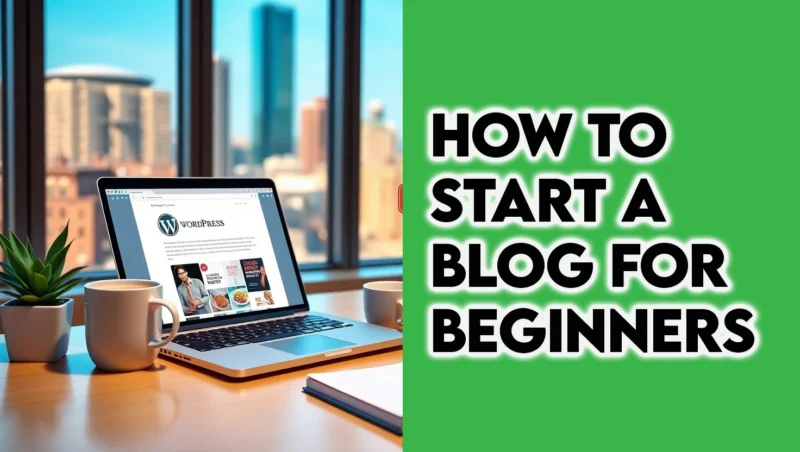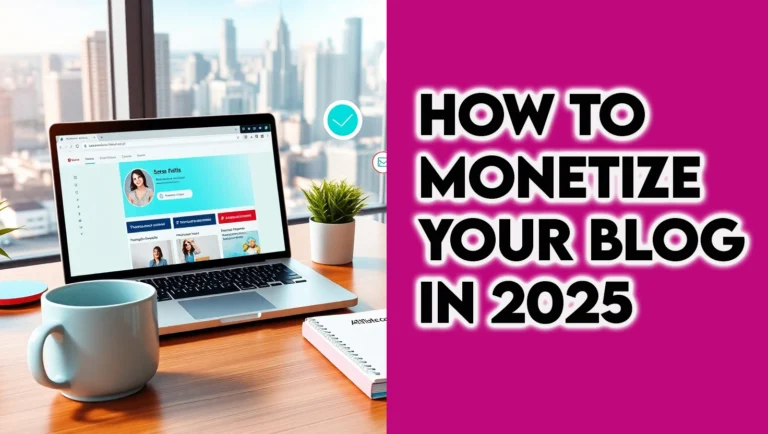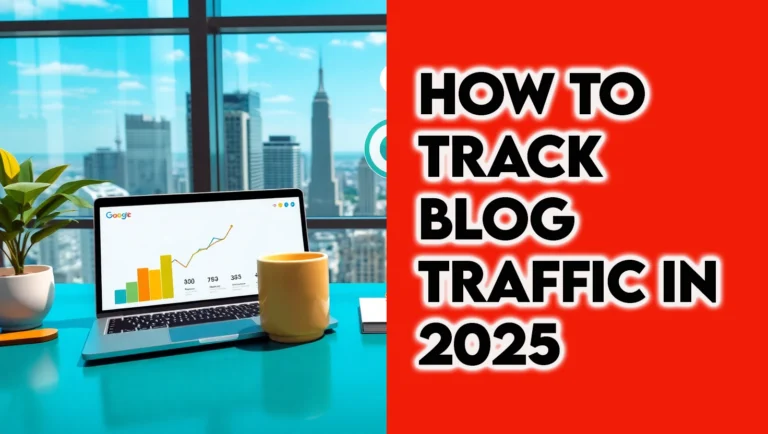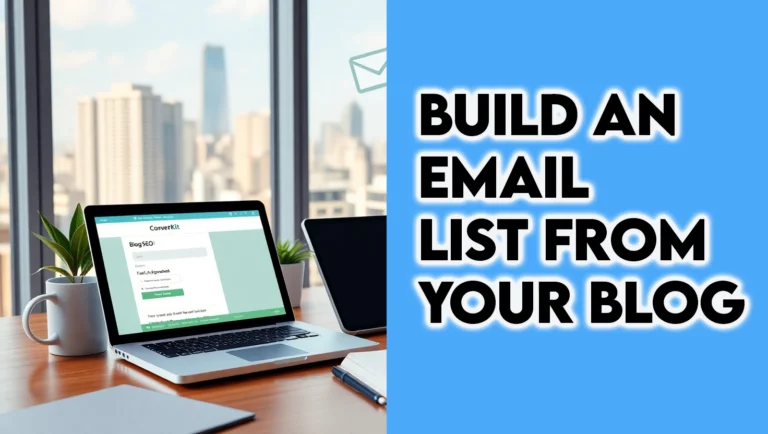How to Start a Blog for Beginner’s (2025 Guide)
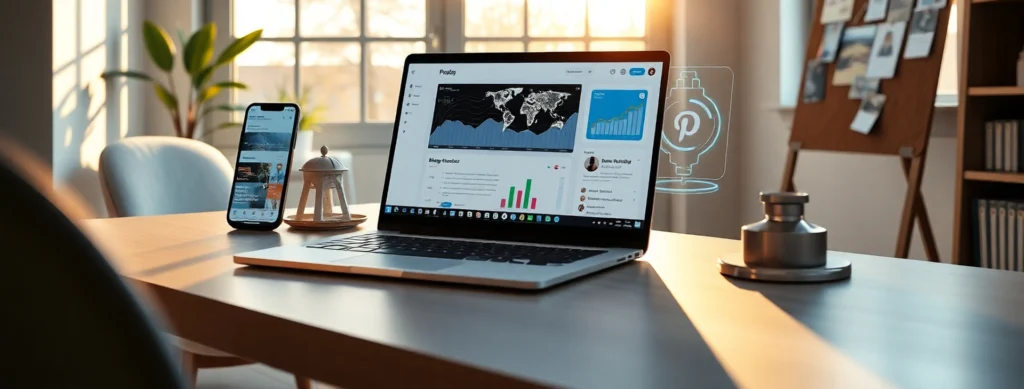
Learning how to start a blog in 2025 is still one of the most accessible and rewarding ways to build an online presence. Whether you dream of sharing your expertise, connecting with a community, or generating a substantial income, blogging offers incredible flexibility and long-term potential. This beginner blogging guide will walk you through the entire process, step-by-step, helping you navigate everything from initial setup to content creation and monetization.
Many people wonder if blogging is still relevant. The answer is a resounding yes! With advancements in AI tools for content creation, better hosting options, and diverse monetization platforms, blogging is more beginner-friendly and powerful than ever. This guide will show you precisely how to start a blog and launch your online journey the right way.
Affiliate Disclaimer: This post may contain affiliate links, which means if you make a purchase through my links, I may earn a small commission at no extra cost to you. I only recommend products and services I genuinely use and love.
Why Start a Blog in 2025?
Blogging continues to be a highly viable and impactful venture for several compelling reasons:
- Low Startup Costs: Compared to traditional businesses, the investment required to start a blog in 2025 is remarkably low. You can get started for as little as the cost of a domain name and basic hosting.
- Flexible Schedule: Blogging offers unparalleled freedom. You can work from anywhere with an internet connection, set your own hours, and be your own boss. This flexibility makes it ideal for side hustlers, parents, or anyone seeking a better work-life balance.
- Long-Term Earning Potential: A well-built blog is an evergreen asset. Content published today can continue to drive traffic and generate income for months or even years to come through various monetization strategies.
- Build Authority and Brand: A blog allows you to establish yourself as an expert in your chosen niche. This authority can open doors to new opportunities, collaborations, and a loyal audience who trusts your recommendations.
- Community Building: Your blog isn’t just a place for content; it’s a hub for connecting with like-minded individuals, fostering discussions, and building a supportive community around your passions.
These advantages make blogging a compelling pursuit for anyone looking to make an impact online.
Step 1: Choose Your Blog Niche
The very first and arguably most critical step to how to start a blog is choosing your niche. Your niche is the specific topic or audience your blog will serve. A well-defined niche helps you attract the right readers, stand out from the crowd, and effectively monetize blog efforts.
To pick a strong niche, look for the intersection of:
- Your Passions and Expertise: What topics genuinely excite you? What do you already know a lot about, or what are you eager to learn deeply? Your enthusiasm will fuel your content creation.
- Audience Demand: Are people actively searching for information or solutions related to your topic? Use tools (we’ll cover these later) to validate search interest.
- Monetization Potential: Can you foresee ways to earn money within this niche? (e.g., through affiliate products, digital courses, services).
Consider popular and proven profitable blog niches like:
- Personal finance (budgeting, saving, investing)
- Productivity & habits
- Sustainable living & eco-friendly choices
- Parenting & family life
- Remote work tips & digital nomad lifestyle
Choosing your niche wisely sets the foundation for your entire blogging journey. It informs your content strategy and helps you connect with your target audience.
Related: For a deep dive into finding your perfect topic, check out our guide on How to Choose a Blog Niche That Makes Money.
Step 2: Pick a Blogging Platform
Once you have your niche, the next decision is your blogging platform. This is the software you’ll use to create and manage your blog. For anyone serious about long-term growth and monetization, there’s one clear recommendation:
Recommended: WordPress.org (Self-hosted)
WordPress.org is a free, open-source content management system (CMS) that powers over 40% of all websites on the internet. It offers unparalleled flexibility, scalability, and control. With WordPress.org, you own your content and have full freedom to customize, add features, and monetize blog content in any way you choose.
Avoid Free Platforms: While options like WordPress.com (the hosted version), Blogger, or Wix might seem appealing due to their “free” nature, they come with significant limitations. These platforms often restrict your customization options, monetization capabilities (e.g., ad placement), and may even place their branding on your site. For serious bloggers, these restrictions quickly become a barrier to growth and profitability.
Need help understanding your options? See our comprehensive guide: Best Blogging Platforms for 2025.
Step 3: Register a Domain Name
Your domain name is your blog’s unique address on the internet (e.g., https://www.google.com/search?q=yourblogname.com). It’s how people will find you, so choose wisely! This is a crucial branding decision when you decide how to start a blog.
When selecting your domain name, aim for something:
- Short and Memorable: Easy to recall and type.
- Easy to Spell and Pronounce: Avoid complex words or obscure spellings.
- Reflective of Your Niche: Ideally, it should give readers an idea of what your blog is about (e.g., “https://www.google.com/search?q=BudgetTraveler.com” or “EcoFriendlyHome.blog”).
- Avoid Hyphens and Numbers: These can make a domain name harder to remember and share.
- Prefer .com: While other extensions like .blog, .net, or .org are available, .com is still the most recognized and trusted.
You can register a domain name through services like Namecheap or GoDaddy. They are domain registrars where you can check if your desired name is available and purchase it.
Step 4: Get Web Hosting
If your domain name is your blog’s address, then web hosting is its home on the internet. Web hosting stores all your blog’s files (text, images, videos) and makes them accessible to visitors 24/7. Reliable web hosting is essential for your blog’s speed, security, and uptime. This is a non-negotiable step for how to start a blog.
For beginners, we recommend hosting providers that offer:
- WordPress Compatibility: Ensure they support WordPress.org installations.
- Good Uptime: Your blog needs to be accessible almost all the time.
- Fast Loading Speeds: Page speed is crucial for user experience and SEO.
- Reliable Customer Support: You’ll appreciate this if you ever run into technical issues.
- Affordability: Look for plans that fit a beginner’s budget, usually starting around a few dollars per month.
Two excellent, beginner-friendly options frequently recommended are:
- Hostinger – Known for its excellent value, fast performance, and user-friendly interface, especially for WordPress users. They offer competitive pricing and good support.
- Bluehost – A popular and affordable choice, especially for new bloggers. It’s officially recommended by WordPress.org itself and offers a seamless WordPress blog setup process.
Once you purchase hosting, you’ll typically link your domain name to your hosting account, a process made easy by most providers.
Step 5: Set Up Your Blog (WordPress)
With your domain and hosting ready, it’s time for the core WordPress blog setup. Don’t be intimidated; modern hosting providers make this surprisingly simple.
- One-Click WordPress Install: Most reputable hosts (like Hostinger or Bluehost) offer a “one-click WordPress installation” tool directly from your hosting control panel (cPanel). This automates the technical setup.
- Log Into Your WordPress Dashboard: Once installed, you’ll receive login credentials to your WordPress admin area (usually at
yourdomain.com/wp-admin). This is where you’ll manage all aspects of your blog. - Choose a Theme: Your theme dictates your blog’s appearance. WordPress offers thousands of free and premium themes. Look for one that’s clean, mobile-responsive, and aligns with your niche. Popular free options include Astra, Kadence, and GeneratePress.
- Install Essential Plugins: Plugins add functionality to your blog. Here are some must-haves for every beginner blogger guide:
- SEO Plugin: (e.g., Rank Math, Yoast SEO) for optimizing your content for search engines.
- Backup Plugin: (e.g., UpdraftPlus) to regularly back up your entire site.
- Security Plugin: (e.g., Wordfence, Sucuri) to protect against malware and attacks.
- Spam Protection: (e.g., Akismet) to filter out unwanted comments.
- Performance Plugin: (e.g., WP Super Cache, LiteSpeed Cache) for speeding up your site.
Related: For a detailed walkthrough of this process, see our guide on How to Set Up Your WordPress Blog the Right Way.
Step 6: Design Your Blog
While your theme provides the basic look, customizing your blog’s design makes it unique and user-friendly. Remember, a clean, intuitive design enhances the reader experience and encourages them to stay longer.
Focus on these key elements:
- Logo and Branding: Create a simple logo that represents your blog’s identity. Use a consistent color palette and typography across your site.
- Homepage Layout: Design your homepage to welcome new visitors, highlight your best content, and guide them to important sections.
- Navigation Menu: Create clear, intuitive menus that allow readers to easily find different categories, your “About” page, or contact information.
- Readability: Choose fonts and font sizes that are easy to read. Ensure good contrast between text and background.
Also read: For more design tips tailored for new bloggers, explore Blog Design for Beginners.
Step 7: Plan Your Content
With your blog set up, it’s time to think about what you’ll write. Effective content planning is crucial for driving traffic and keeping your audience engaged. Don’t just write about anything; target topics that people are actively searching for.
Start by brainstorming 5–10 “pillar posts” or foundational articles that address key questions in your niche. These should be comprehensive and provide significant value.
Use tools for content ideation and keyword research:
- Ubersuggest: Helps you find keyword ideas, content suggestions, and analyze competitor content.
- AnswerThePublic: Visualizes common questions people ask around a keyword, providing a wealth of content ideas.
- Google Search Autocomplete & “People Also Ask”: Type a keyword into Google and observe the auto-suggestions and the “People Also Ask” section. These are real questions people are looking for answers to.
Learn more: Dive deeper into strategic content planning with our Full Blog Content Strategy guide.
Step 8: Write & Publish Your First Posts
This is where your blog truly comes alive. Don’t aim for perfection with your first posts; aim for completion. You can always improve them later. Focus on delivering value and answering your readers’ questions.
Adopt a consistent writing process to make it easier:
- Keyword Research: For each post, identify a primary keyword you want to rank for.
- SEO-Friendly Headline: Craft compelling headlines that include your primary keyword and entice clicks.
- Outline with Subheadings: Use H2s and H3s to break down your content into logical, scannable sections. This improves readability and SEO.
- Internal & External Links: Include internal links to other relevant posts on your blog and external links to reputable sources.
- Clear Call-to-Action: Guide your reader on what to do next (e.g., leave a comment, read another post, sign up for your email list).
Remember, consistency is key in blogging. Make it a habit to regularly create and publish content.
Related: Get a detailed walkthrough on How to Write Your First Blog Posts.
Step 9: Promote Your Blog
Even the best content won’t get seen if you don’t promote it. Early promotion is crucial for driving initial traffic to your new blog. Don’t just hit publish and hope for the best!
Start with these effective promotion channels:
- Pinterest: This visual search engine is fantastic for beginners. Create attractive pins that link to your blog posts, especially for evergreen content.
- Facebook & Reddit Communities: Share your content in relevant, niche-specific groups (ensure you follow group rules and don’t just spam). Engage with others first.
- Email Newsletters: Start building an email list from day one. Your email list is your most valuable asset, allowing you to directly notify subscribers about new content.
- Guest Blogging: Write articles for other established blogs in your niche. This exposes your content to a new, relevant audience and helps build backlinks to your site.
- Social Media: Share snippets, questions, and links to your new posts across relevant social media platforms.
In-depth: Learn specific strategies for a key platform with our guide on How to Promote Your Blog on Pinterest.
Step 10: Monetize Your Blog
Once your blog starts gaining traction and attracting readers, you can begin to monetize blog traffic. There are several popular strategies to turn your blog into a source of income.
Common monetization options include:
- Display Ads: Once you reach a certain traffic threshold, you can partner with ad networks (like Ezoic, Mediavine, or Raptive) to display ads on your site.
- Affiliate Marketing: Promote products or services from other companies and earn a commission when your readers make a purchase through your unique links. This works well when you genuinely recommend products relevant to your niche.
- Selling Digital Products or Services: Create and sell your own e-books, online courses, printables, templates, coaching, or consulting services. This is often the most profitable method as you keep a larger share of the revenue.
- Sponsored Posts: Brands pay you to create content (blog posts, social media mentions) that features their products or services. This usually comes once your blog has established authority and a decent audience.
The best approach is often to diversify your income streams. Don’t put all your eggs in one basket.
Start here: Get a full breakdown of strategies in Blog Monetization Strategies.
FAQ: How to Start a Blog (2025)
As you embark on your blogging journey, it’s natural to have questions. Here are answers to some common inquiries about how to start a blog and what to expect as a beginner blogger guide.
Can I start a blog with no prior experience?
Absolutely, yes! Blogging is incredibly beginner-friendly. Platforms like WordPress are designed to be intuitive, allowing you to start a blog without any coding knowledge. Many successful bloggers started with zero experience.
How much does it cost to start a blog in 2025?
The essential costs are relatively low. You can typically get started for as little as $50–$100 per year for your domain name and basic web hosting. Other costs, like premium themes or advanced tools, are optional and can be added as your blog grows.
How soon can I expect to make money from blogging?
Monetizing a blog takes time and consistent effort. It varies greatly depending on your niche, content quality, promotion efforts, and chosen monetization strategies. Generally, most bloggers start seeing a noticeable income within 6–12 months, but significant income can take longer.
What are some of the best niches for blogging in 2025?
Trending and consistently profitable niches for 2025 include remote work, personal finance, AI tools and technology for beginners, eco-living/sustainable lifestyles, and productivity. However, the “best” niche is ultimately one you’re passionate about and that has an audience.
Should I blog under my real name or a pseudonym?
This is optional and depends on your preference and niche. Many bloggers succeed with personal brands (using their real name), especially if they offer services or build a strong personal connection. Others prefer pseudonyms or brand names to maintain privacy or create a distinct brand identity.
Can I blog part-time while working full-time?
Yes, definitely! Most bloggers begin their journey as side hustlers, dedicating a few hours each week to their blog until their income grows enough to potentially transition to full-time. Consistency is more important than putting in long hours initially.
Do I need to know how to code to start a blog?
No coding is needed to start a blog with recommended platforms like WordPress.org. Their intuitive interfaces and drag-and-drop page builders (with certain themes/plugins) allow you to design and manage your site without writing a single line of code.
Where can I learn more about SEO for bloggers?
Understanding basic SEO is crucial for getting found in search engines. You can learn more from our detailed guide: SEO Guide for Beginners. For a comprehensive external resource, check out Moz’s Beginner Guide to SEO.
Final Thoughts: Your Blogging Journey Begins Now
You now have a clear roadmap for how to start a blog in 2025. This takes work – but it’s worth it if you stick with it! The journey of building a blog is incredibly rewarding, offering a platform for your voice, a way to connect with others, and the potential for significant income.
A Quick Heads-Up: While I’m guiding you through how to start a blog in 2025, please understand that success in blogging (like any online venture!) takes consistent effort, patience, and often, experimentation with your content and strategy. Don’t expect overnight results, but if you put in the work and apply these beginner blogging tips, you absolutely can see incredible payoffs in your audience growth, traffic, and income potential.
Remember, every expert was once a beginner. Take these steps one by one, be patient, and consistently put in the effort. The digital world is ready for your unique contribution. Your blog is a long-term asset that grows in value over time.

